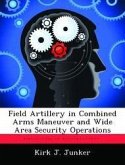In August 2010, the U.S. Army published The United States Army Operating Concept 2016-2028 (AOC). The AOC attempts to forecast the Army's future capability requirements based on analysis of possible threats. In past and current deployments, the U.S. Army has sought to achieve versatility with a standardized force structure of light, medium, and heavy forces optimized for major combat operations. In the event of a different type of conflict, Army leaders changed their units'; training focus and requested additional resources to make up any capability gaps. This approach to versatility requires time, expertise, and equipment to conduct the relatively rapid transformation. Due to a variety of potential future threats, the requirement to react quickly to emerging threats, and constrained financial resources, the U.S. Army must create a single, versatile, and agile force structure that can adapt to uncertain and unexpected conditions. How should the United States Army optimize its brigade combat teams (BCTs) for versatility and agility to meet the requirements anticipated through 2028 in the recently published AOC? The research answers this question by examining future requirements for BCTs and their current ability to meet these requirements in order to determine capability gaps, which provides the basis for recommendations. The most likely level of conflict facing future BCTs remains in the insurgency level of the conflict spectrum. However, this assessment also recognizes the requirement to prepare the U.S. Army to counter violent extremism and indirect attacks from emerging regional powers employing a hybrid strategy during the next two decades. The 2008 National Defense Strategy provides the baseline for determining the priority of missions. Consequently, the U.S. Army's future BCTs must prepare for two types of future; insurgency and general war. The U.S. Army's solutions for future tactical missions in either type of conflict are contained in the AOC. The AOC sol








